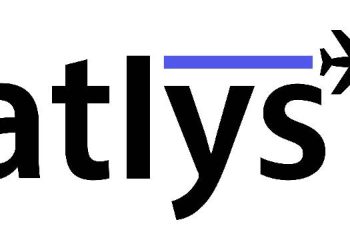Bengaluru: The findings of a recent study by Flipkart have revealed that merchants, kiranas, and MSMEs witnessed increased growth this year as compared to 2020. Customer insights indicate that e-commerce is gaining in popularity as it offers greater convenience, user-friendly interfaces enabled by technology, inclusive access to a wide range of products, and affordable financial constructs. Flipkart, through its strong governance, deep experience, and investments, has built capacity that allows it to scale the business in a sustainable manner – while providing customers the best value, access, and peace of mind.
Rajneesh Kumar, Chief Corporate Affairs Officer, Flipkart Group, said, “As India’s homegrown e-commerce marketplace, we are committed to delivering the best products to all customers using the latest technology, irrespective of their location. Flipkart has consistently focused on creating an inclusive e-commerce shopping experience and thereby transforming how India shops. Over the past year, we have empowered our partners, built new capabilities in the Grocery and supply chain, and introduced new features on our platform that aim to benefit all ecosystem stakeholders. We will continue to introduce innovations that meet consumers’ rising expectations while also empowering sellers, merchants, and MSMEs to access the Indian market more effectively and efficiently.”
Tier 3+ cities have emerged as strong growth markets
There has been a change in the way Indians are looking at shopping, not just in urban regions but also in smaller cities and towns. Flipkart witnessed a 47% year-on-year (YoY) customer growth in Tier 3+ cities this past year. In Tier 3+ cities, the fashion category had the biggest YoY customer growth of 58%. This growth can be attributed to the successful democratization of fashion by Flipkart and the growing role of social media in influencing shopping decisions. Smartphones, audio devices, grooming products, fashion wearables (fashion jewelry, wallets, belts, sunglasses), men’s footwear, and household items were some of the top categories that were in high demand for shoppers in Tier 3+ cities.
Neighborhood kiranas become the wheels of e-commerce across the country
The increasing adoption of customers from across the country, particularly Tier 3+ cities, was largely enabled by the rapid expansion of supply chain infrastructure and extended delivery partners. Today, over 1 lakh kiranas onboarded with Flipkart make 30% of the 60 million+ deliveries made per month across the country, offering a very personalized e-commerce experience to millions of customers. These kirana partners also witnessed an increase of over 30%+ in their average delivery incomes compared to last year, which helped drive the adoption of e-commerce across smaller cities through a faster delivery experience.
Speed and quality assurance are contributing to a boom in the Grocery and hyperlocal business
Flipkart’s hyperlocal delivery business witnessed a 25X increase in orders compared to last year. The share of hyperlocal orders within total grocery orders on Flipkart increased from 1% in 2020 to over 17% in 2021. Flipkart continues to gain ground in this segment with Flipkart Quick, which enables consumers to get their products delivered within 90 minutes of placing an order online. Customers can place their orders at any time of day and have them delivered between 6 AM and midnight.
Flipkart has also made deep investments in its Grocery business in the past two years as consumers from Tier 2 and 3 markets also embark on the seamless journey of e-commerce buying. The category has seen a 2X growth in revenue and customers respectively in 2021. It is on track to service customers in 1800 cities by the end of 2021, including Ajmer, Amritsar, Bhuj, Bokaro, Daman & Diu, Dehradun and Kanyakumari, among others.
Vernacular language interface and Voice capabilities are accelerating the adoption of e-commerce
With e-commerce adoption rising fast in Tier 3+ cities, the share of Indian-language users on Flipkart increased from 12% in Q4 2020 to 18% in Q4 2021. Coming to popular browsing categories, Smartphones account for 57% of regional language traffic, followed by fashion wearables (44%), and audio devices (39%) respectively.
Tier 3+ cities had the highest percentage of non-English users (22%), indicating that regional languages will continue to play an important role in attracting and retaining consumers from these markets. Among the 11 Indian language interfaces on Flipkart, Hindi, Tamil, Telugu and Bengali are the most widely used languages on the platform, growing by over 2X over the past 1 year. Bengali and Malayalam are witnessing the fastest growth in terms of adoption among new customers.
Flipkart’s Voice Search witnessed nearly 3 million daily queries this year, with Tier 3+ cities constituting more than half of the overall voice queries. Patna, Ranchi, Surat and Bhagalpur are among the top 25 cities.
Flipkart Wholesale Witnessed Robust Growth
Kiranas and retailers have shown increased trust and adoption of B2B e-commerce with Flipkart Wholesale witnessing solid growth across categories.
Fashion category clocked an overall growth of 9.4X and its customer base grew by 3.5X. In terms of e-commerce adoption, it jumped up by 2X while the selection for this category grew by 4X. In 2021, Flipkart Wholesale’s fashion category also expanded its reach from 8 cities to 1715.
Grocery category witnessed 1.2X growth at a gross level and a surge of 1.1X in its total customer base. Unassisted share of grocery also increased by 2.5X
Four months since its launch on the Flipkart Wholesale platform, the general merchandising category saw an overall growth of 1.12X and its customer base moved up by 1.2X. General merchandising also recorded a 4X growth in its e-commerce adoption and 9X growth in the selection while expanding its presence from 29 cities to 351.

















